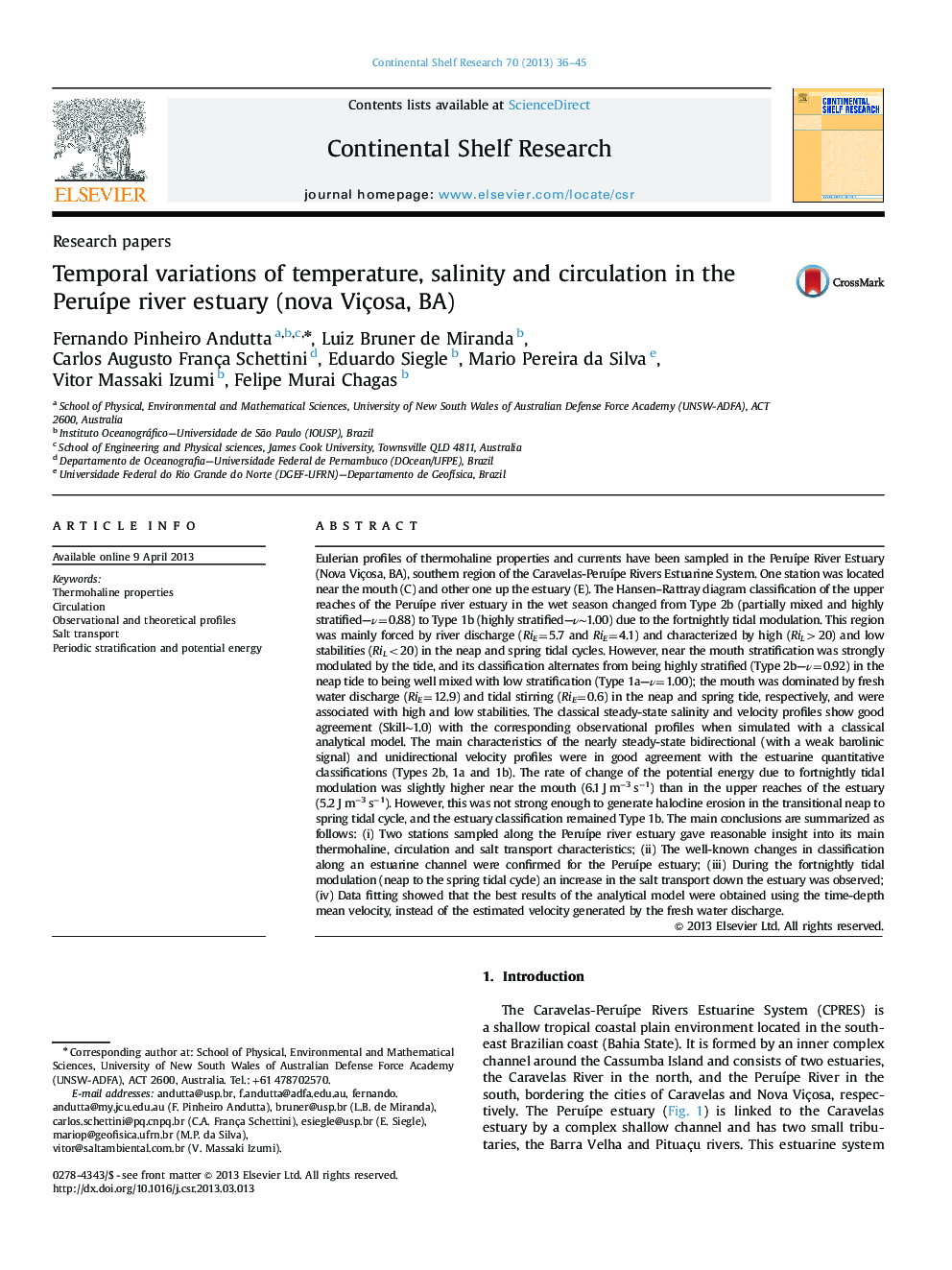| Article ID | Journal | Published Year | Pages | File Type |
|---|---|---|---|---|
| 4531977 | Continental Shelf Research | 2013 | 10 Pages |
Abstract
Eulerian profiles of thermohaline properties and currents have been sampled in the PeruÃpe River Estuary (Nova Viçosa, BA), southern region of the Caravelas-PeruÃpe Rivers Estuarine System. One station was located near the mouth (C) and other one up the estuary (E). The Hansen-Rattray diagram classification of the upper reaches of the PeruÃpe river estuary in the wet season changed from Type 2b (partially mixed and highly stratified-ν=0.88) to Type 1b (highly stratified-νâ¼1.00) due to the fortnightly tidal modulation. This region was mainly forced by river discharge (RiE=5.7 and RiE=4.1) and characterized by high (RiL>20) and low stabilities (RiL<20) in the neap and spring tidal cycles. However, near the mouth stratification was strongly modulated by the tide, and its classification alternates from being highly stratified (Type 2b-ν=0.92) in the neap tide to being well mixed with low stratification (Type 1a-ν=1.00); the mouth was dominated by fresh water discharge (RiE=12.9) and tidal stirring (RiE=0.6) in the neap and spring tide, respectively, and were associated with high and low stabilities. The classical steady-state salinity and velocity profiles show good agreement (Skillâ¼1.0) with the corresponding observational profiles when simulated with a classical analytical model. The main characteristics of the nearly steady-state bidirectional (with a weak barolinic signal) and unidirectional velocity profiles were in good agreement with the estuarine quantitative classifications (Types 2b, 1a and 1b). The rate of change of the potential energy due to fortnightly tidal modulation was slightly higher near the mouth (6.1 J mâ3 sâ1) than in the upper reaches of the estuary (5.2 J mâ3 sâ1). However, this was not strong enough to generate halocline erosion in the transitional neap to spring tidal cycle, and the estuary classification remained Type 1b. The main conclusions are summarized as follows: (i) Two stations sampled along the PeruÃpe river estuary gave reasonable insight into its main thermohaline, circulation and salt transport characteristics; (ii) The well-known changes in classification along an estuarine channel were confirmed for the PeruÃpe estuary; (iii) During the fortnightly tidal modulation (neap to the spring tidal cycle) an increase in the salt transport down the estuary was observed; (iv) Data fitting showed that the best results of the analytical model were obtained using the time-depth mean velocity, instead of the estimated velocity generated by the fresh water discharge.
Related Topics
Physical Sciences and Engineering
Earth and Planetary Sciences
Geology
Authors
Fernando Pinheiro Andutta, Luiz Bruner de Miranda, Carlos Augusto França Schettini, Eduardo Siegle, Mario Pereira da Silva, Vitor Massaki Izumi, Felipe Murai Chagas,
